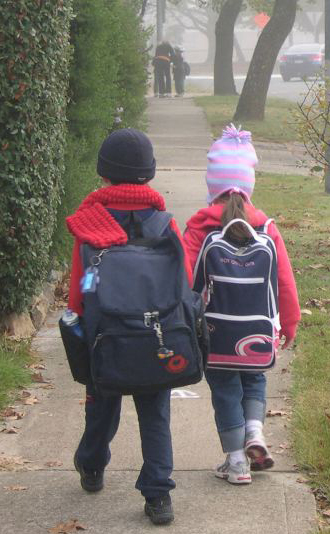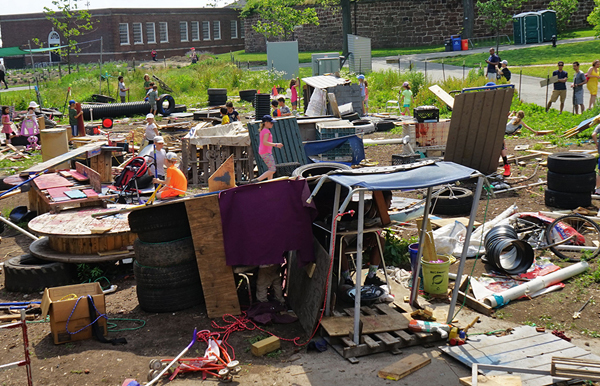 The topic came up rather suddenly. My son-in-law had dropped by to pick up his children. He sat on the step. We got caught up on the day. Then, he explained that he had been talking to his eldest daughter – that she was getting to the right age – about walking home from school with a friend rather than being picked up every day by her dad or her grandparents.
The topic came up rather suddenly. My son-in-law had dropped by to pick up his children. He sat on the step. We got caught up on the day. Then, he explained that he had been talking to his eldest daughter – that she was getting to the right age – about walking home from school with a friend rather than being picked up every day by her dad or her grandparents.
“We want to help give her a sense of independence,” he said.
His initiative grew into a brief discussion about when and how to help his children (our grandchildren) grow into thinking young adults who are able to evaluate situations, discern a bit of right from wrong and learn independent decision-making with enough guidance not to hamper them, but only as much freedom as his family’s values dictate while keeping danger at bay.
It came down to a discussion about how much parents should worry about their children. Coincidentally, we had the discussion the day before the van incident in Toronto, which of course made all of us think: “Thank goodness our children weren’t walking along Yonge Street last Monday afternoon.”
At the point of writing this column, we still have not heard whether any children were among the dead or injured in the incident early Monday afternoon when a driver steered a rented van onto the sidewalk between Finch and Sheppard and indiscriminately struck people as they walked.
 In the news coverage and analysis that followed the killing spree, reporters, anchors and terrorism specialists talked about the rise of targeting so-called “soft targets,” in other words, people and places where the public generally circulates unencumbered and where there’s been no wish or need to introduce military-style security. I can only imagine the discussions over dinner table these last few nights as those children who saw media coverage of the van incident quizzed their parents, “What does this mean?”
In the news coverage and analysis that followed the killing spree, reporters, anchors and terrorism specialists talked about the rise of targeting so-called “soft targets,” in other words, people and places where the public generally circulates unencumbered and where there’s been no wish or need to introduce military-style security. I can only imagine the discussions over dinner table these last few nights as those children who saw media coverage of the van incident quizzed their parents, “What does this mean?”
Inevitably, for some adults already accused of being “helicopter” parents for hovering over their children 24/7, this sort of aberrant behaviour fuels their fears and reinforces their obsession to oversee their kids at every turn.
On the other hand, on Monday afternoon, how many hundreds, if not thousands, of sidewalks across the GTA handled pedestrians, couriers, strollers, first-time-this-spring patio-goers and, yes, children walking to or from school without incident? I think it’s an illness of our time – thinking that catastrophic phenomena lurk around every corner just waiting to overtake us, especially our children.
Scientists have now begun to respond to the general paranoia of watchful parents overdoing it. For those who insist on walking their children along safe streets to school, or don’t allow them to play in a nearby urban woods, or insist they be supervised in a playground, research suggests that’s crazy.
Stats published in a Today’s Parent story this week, say even in the U.S., reports of missing children – between 1997 and 2014 – decreased 40 per cent. Traffic studies showed in the U.S. incidents of children struck by cars – between 1993 and 2013 – went down over 60 per cent.
What’s worse, the same story quotes an Ontario Children and Youth Mental Health survey in 2017, saying that six in 10 children were worried – not worried about stuff hurting them, but – about worrying. So much so, that half of them have missed school by being so worried.
It was a different time, much simpler and more innocent I realise, but I remember growing up in Agincourt in the early 1960s (when it had just become part of Scarborough). On a typical Saturday morning in good weather, several of us boys and girls together, with our parents’ full knowledge, left our houses, hopped on our bikes, and pedalled kilometres to where the Toronto Zoo sits today to spend the day exploring the wilds of the Rouge River valley. We must have made that trip a dozen or more times and because we knew we had to be back before sunset, and were, no parent ever sweated a drop or worried a second about our travels or our safe return.
 “It’s a Catch-22,” says Stephen Marche, the author of the Today’s Parent story. “Our desire to see that no harm comes to our kids is causing harm to our kids.”
“It’s a Catch-22,” says Stephen Marche, the author of the Today’s Parent story. “Our desire to see that no harm comes to our kids is causing harm to our kids.”
Marche then takes readers into a fascinating playground created on Governors Island in New York City. The space contains broken-down bikes, piles of planks, discarded auto tires and PVC tubes, all scattered about much like a junk yard. Except it’s a playground for kids. The concept, called Play:ground, invites kids to jump in with hammers and saws and assorted other tools to shape what’s there into whatever they like. “Kids roam over this scrapyard, gleefully building and destroying, daring one another and leaping from great heights, running around like crazy,” Marche writes.
And here’s the best part: No parents are allowed inside, just along the fence watching the chaos unfold. I think something like this is worth exploring for kids’ safety sake and their parents’ sanity sake.